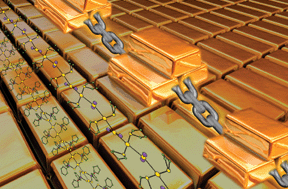The use of aurophilic and other metal–metal interactions as crystal engineering design elements to increase structural dimensionality†
Abstract
Research in the field of supramolecular chemistry has rapidly grown in recent years due to the generation of fascinating structural topologies and their associated physical properties. In order to rationally synthesize such high-dimensionality systems, several different classes of non-covalent intermolecular interactions in the crystal engineering toolbox can be utilized. Among these, attractive metallophilic interactions, such as those observed for d10gold(I), have been increasingly harnessed as a design element to synthesize functional high-dimensional systems. This tutorial review will explore the methods by which gold(I) and other d10 and d8 metal centres have been employed to increase structural dimensionality via the formation of metal–metal interactions. Physical and optical properties associated with metallophilicity-based supramolecular structures will also be highlighted.

- This article is part of the themed collection: Gold - Chemistry, Materials and Catalysis

 Please wait while we load your content...
Please wait while we load your content...